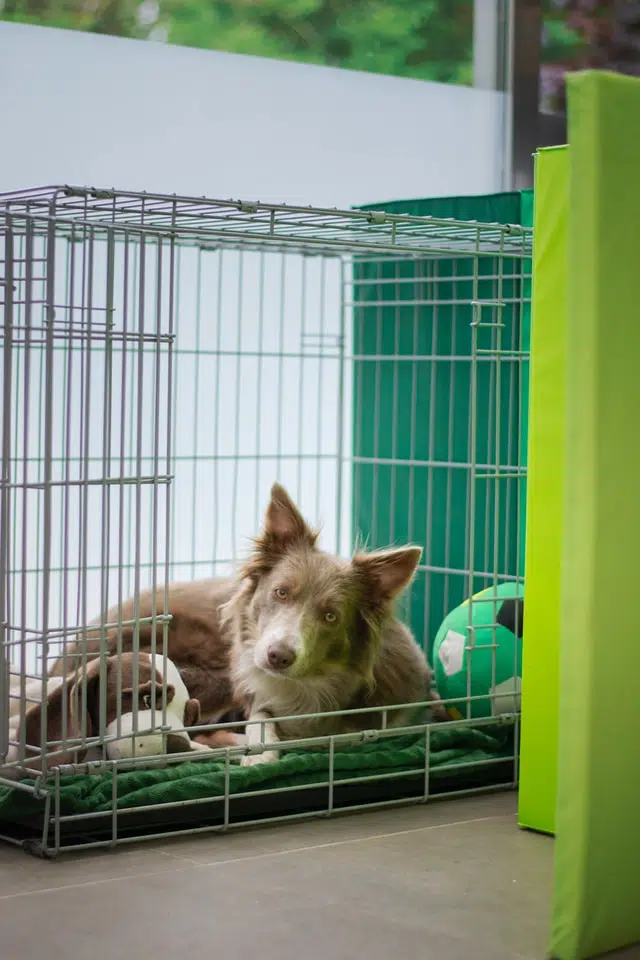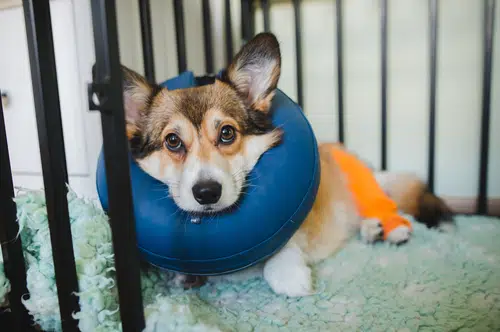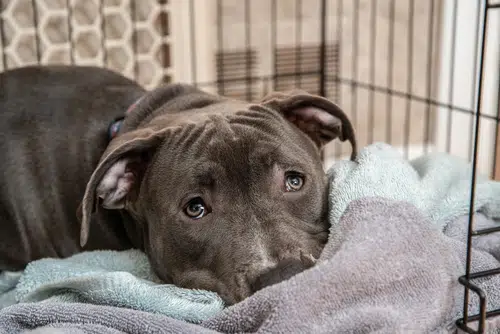Home » Blog » Pet » Pet Parenting Lifestyle » How to Manage a Dog on Crate Rest
Categories
Tags
animal welfare
breed profile
buying a car
buying a pet
Car
car accessories
car care
car features
car insurance
Car safety
car sales
car service
cat
cat behaviour
cat body language
Cat Breeds
cat food
cat insurance
comprehensive car insurance
Dog
Dog Behaviour
dog body language
Dog Breeds
dog food
Dog Insurance
dog training
eco friendly cars
Kitten
New Car
pet accessories
pet activities
Pet Adoption
pet breeders
pet days of the year
pet fun stuff
Pet Health
pet insurance
pet parenting
Pet Safety
pet services
Puppy
rescue pets
road safety
road trip
safe driving
Recent Blog:
Facebook Posts
2 days ago
Growing old sometimes means we can’t take care of pets anymore. Find out some advice on what to do when this happens:![]()
![]() Senior Pet Parents – Contingency Plans for Your Pet – bit.ly/44bzwkS
... See MoreSee Less
Senior Pet Parents – Contingency Plans for Your Pet – bit.ly/44bzwkS
... See MoreSee Less
Senior Pet Parents' Contingency Plans for Pets
www.pd.com.au
Sometimes senior pet parents need more downtime. For older pet owners, this can be tricky to navigate if their dog or cat is full of beans and wants to4 days ago
Before you rev up the engine, let’s run through a checklist of things to do before starting your car. Not only do these steps ensure your safety (and that of others around you), but they also help in maintaining your vehicle's longevity.![]()
![]() Driving Tips: Your Checklist Before Starting Your Car -
... See MoreSee Less
Driving Tips: Your Checklist Before Starting Your Car -
... See MoreSee Less
Driving Tips: Your Checklist Before Starting Your Car
www.pd.com.au
Heading out for a drive? Hold up a second! Whether you're dashing off to work, running errands, or embarking on a road trip adventure, there are a few1 week ago
Are intestinal worms setting up camp in your dog’s gut without paying rent? Here’s how to spot the main culprits and get rid of them too:![]()
![]() Preventing, Identifying and Treating Intestinal Worms in Dogs - bit.ly/43YjCKu
... See MoreSee Less
Preventing, Identifying and Treating Intestinal Worms in Dogs - bit.ly/43YjCKu
... See MoreSee Less
Preventing, Identifying and Treating Intestinal Worms in Dogs
www.pd.com.au
Intestinal worms, such as roundworms in dogs are one of the least glamorous topics on the planet. These intestinal parasites that basically use our dogsIf your pooch has been put on crate rest, you’re probably worrying about how to keep them calm and happy. The reality is that most pet parents don’t crate train their puppies – and even if you do, a few hours in a crate is different to a few days, weeks or months.
But when it comes to making sure your dog makes a good recovery from illness or injury, sometimes crate rest can’t be avoided. There are things you can do to manage the situation and make it easier. For you AND the dog, we mean.
Why would a dog be on crate rest?
Your dog might not be too excited about the idea of an extended rest period but sometimes it’s necessary for their health. For example, after certain procedures or injuries requiring prolonged rest to avoid reinjury or further complications.
The problem comes in when the rest period extends past the point where your dog feels better and just wants to get back to regular life.
Here are a few common instances of when crate rest is prescribed:
| Surgery | After surgery, your dog might need to rest for a while. This goes for all surgeries, but crate rest is particularly common with orthopaedic conditions. For instance, hip dysplasia in dogs, arthritis in dogs, cruciate ligament surgeries, and IVDD in Dachshunds and other breeds. |
| Desexing | After having your pup neutered or spayed they may need to rest for as long as two weeks. This is for stitches to hold and wounds to heal up properly. |
| Accident | Not all accidents require surgery. But if your dog breaks a bone or gets a nasty bite wound, for instance, they’ll likely require constricted movement for a long period. |
Illness is another instance in which rest is needed, but crate rest often isn’t necessary in these cases. Your dog will feel sick enough to not want to be racing around playing frisbee or chasing birds.
Crate rest: What to do and what not to do
If your dog has been put on strict crate rest, you might need to implement some emergency strategies. Here’s what to do and what not to do to make sure you both make it through this (trying) time unscathed.

What to do
Firstly, here’s the stuff you definitely should do when a vet prescribes crate rest for your precious pup.
1. Plan in advance
It isn’t always possible to plan in advance for crate rest. But if you have a night or two to prepare, you’ll want to make everything as easy on yourself as possible. Assemble the crate beforehand and make sure it’s comfy for your dog with plenty of blankets or a dog bed inside, plus there’s a way to cover the crate to block out lights if needed.
Check whether you’ll need to carry your dog outside (e.g. to go to the toilet) and make sure there’s an easy place to access a door. Think about any stairs or obstacles you might need to clear, and decide where in the home your pup will be happiest. You might need to move the crate or have two so your pet can be close to you in the day and at night.
2. Have your vet visit at home
If your dog needs plenty of follow ups and supervision, it might be best to ask your vet whether a home visit is possible. If so, it negates the need for you to get them into the car, out to the vet and accompanying you in dealing with all of the associated stuff.
3. Keep your dog stimulated
Of course, you can’t do the usual things like going for a walk. And you can’t even be smart and use one of the ways we suggest you exercise your dog without walking. But you can still stimulate your dog’s senses in a safe way.
For instance, feed them their meals in a treat dispensing toy so they have to spend longer eating and working it out. A frozen Kong or a long-lasting chew is also a good way to keep them occupied for long periods of time.
You should make sure you spend time paying your dog attention too. Talk to them, pet them through the crate, and so on. You can also put on the radio or TV – anything to keep their minds busy, even if their bodies can’t join in the fun. Perhaps you could even find some dog movies they’ll like.

What not to do
Now, on to the things you want to avoid when your dog is on crate rest.
1. Don’t have visitors
Rest time for your dog, certainly in the initial period, means a bit of a pause on your social life. Remember, your dog is probably frustrated and anxious. When you have guests over they generally want to either greet everyone and be involved. Or, they’ll want to make sure the “home invaders” are safe for their human family.
Either way, what they don’t want to do is stick to their crate rest directives. So it’s best to keep the home environment calm and quiet, without lots of people coming and going.
If you can make sure someone is home with your dog during most of the day, even better. That way, you lessen the chances of having to deal with pet separation anxiety on top of crate rest stress.
2. Don’t get a plastic crate
If your dog’s going to be on crate rest for an extended period, metal wire is usually the best option. They tend to be easily collapsible, are sturdy enough to stand up to determined pets trying to escape, and allow your dog to see out. And you to see in, obviously.
There are tons of pet carriers on the market – but what you need for a quick trip to the vet is a bit different to what you need for 6 weeks of rest.
A plastic crate can make dogs feel too isolated as they can’t see in and out. Plus, their ventilation isn’t as the wire ones.
This is how to set up most wire crates:
3. Don’t change routines
Admittedly, your dog’s usual routine will change somewhat. They won’t be going for their morning walk or accompanying you anytime you make a cup of coffee. However, you should try to keep their schedules as regular as possible.
Feed them at the same time, go to bed at the same time, and generally give your dog some sense of structure. It won’t totally alleviate the stress of crate rest, but it will help provide normality.
Final note on crate rest: Insurance for a soft landing
Dog insurance might not cover the cost of the actual crate when it’s time to rest. Having said that, it does mean you don’t need to bankrupt yourself for vet tests and treatment, surgery or hospitalisation. If the idea of a big vet bill sends you into cold sweats, perhaps it’s time to invest in quality, affordable protection for your furkid?
Share On:




